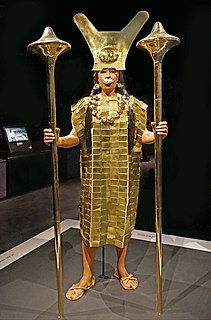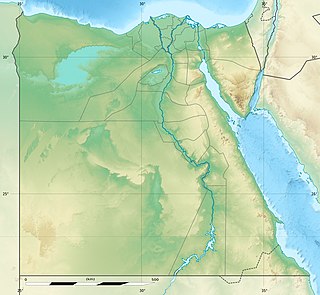 W
WAdobe is a building material made from earth and organic materials. Adobe is Spanish for mudbrick, but in some English-speaking regions of Spanish heritage the term is used to refer to any kind of earthen construction. Most adobe buildings are similar in appearance to cob and rammed earth buildings. Adobe is among the earliest building materials, and is used throughout the world.
 W
WThe Balsz House is a historic adobe house in Yuma, Arizona. It was built in 1899 by Harry Neahr, and it belonged to the Balsz family from 1919 to 1976. The Balszes worked in the meat industry. The house is "a well preserved example of middle class housing in Yuma at the turn of the century." It has been listed on the National Register of Historic Places since December 7, 1982.
 W
WThe Ebenezer Beesley House in Salt Lake City, Utah, is a 2-story adobe brick and stucco Vernacular house constructed in the 19th century. The house is one of only a few I-form adobe structures remaining in the city, and it includes minimal ornamentation. The house was added to the National Register of Historic Places in 1979.
 W
WThe William F. Butler House is a historic house in St. George, Utah. It was built as an adobe house in 1865 by William Franklin Butler, an early convert to The Church of Jesus Christ of Latter-day Saints. Butler first settled Palmyra, Utah with other Mormon converts in 1852 before moving to Spanish Fork, Utah, where he became a council member. In 1861, after President Brigham Young had asked them to, Butler moved to Southern Utah with more than 300 Mormon families and he became one of the first settlers of St. George. This house was built shortly after, and Franklin lived here with his two wives and many children. It was acquired and expanded by Henry G. Bryner, an immigrant from Switzerland and a Mormon convert, in 1886. It has been listed on the National Register of Historic Places since July 13, 1984.
 W
WCady Hall is a Spanish Colonial Revival building in Patagonia, Arizona. The building was constructed in 1901 as the Patagonia Hotel by local businessman John Cady (1846–1927). During the twentieth century it was used as a hotel, a boarding house, a church, a library and a social hall. The L-shaped one-story plastered adobe building has a pyramidal roof over the main section and a gable room over the hotel portion, with a shed roofed addition. The main section houses the meeting spaces. Sheet metal has replaced the original shingle roofing. A porch roof follows the profile of the main roof a lower elevation on two sides.
 W
WThe Combellack Adobe Row House is an adobe row house located on Central Street in Tonopah, Nevada. The Tonopah Extension Mining Company built the home in 1903 to house its employees. The house is the oldest adobe home in Tonopah; its walls were cast in place rather than built in blocks, as the former method was more efficient and more popular in the town. The home was part of one of Tonopah's first residential areas on Central Street, which was a well-developed district by 1904. J.M. Combellack, who had lived in the home since it was built, became its owner in 1905.
 W
WThe Fort Harmony Site is a historic site with a monument in New Harmony, Utah. It was established on May 20, 1854 by Brigham Young, who served as the second president of The Church of Jesus Christ of Latter-day Saints from 1847 to 1877. It was built with adobe, and it served as the home of Mormon settlers like John D. Lee until 1862. The site was later acquired by homesteader Andrew G. Schmutz. A historical marker was later installed by the Daughters of Utah Pioneers. The site has been listed on the National Register of Historic Places since November 16, 1979.
 W
WFort Saint Vrain was an 1837 fur trading post built by the Bent, St. Vrain Company, and located at the confluence of Saint Vrain Creek and the South Platte River, about 20 miles (32 km) east of the Rocky Mountains in the unorganized territory of the United States, in present-day Weld County, Colorado. A historical marker notes the place where Old Fort St. Vrain once stood, today at the end of Weld County Road 40, located about seven miles north of Fort Vasquez, Colorado. Among those who helped to establish the fort was Ceran St. Vrain, after whom it was named.
 W
WThe George and Bertha Graff House is a historic house in Santa Clara, Utah. It was built with adobe in 1908 by George A. Graff, a farmer of Swiss descent. It has been listed on the National Register of Historic Places since December 4, 1998.
 W
WThe Huaca del Sol is an adobe brick temple built by the Moche civilization on the northern coast of what is now Peru. The temple is one of several ruins found near the volcanic peak of Cerro Blanco, in the coastal desert near Trujillo at the Moche Valley. The other major ruin at the site is the nearby Huaca de la Luna, a better-preserved but smaller temple.
 W
WThe jacal is an adobe-style housing structure historically found throughout parts of the south-western United States and Mexico. This type of structure was employed by some aboriginal people of the Americas prior to European colonization and was later employed by both Hispanic and white settlers in Texas and elsewhere.
 W
WThe Lady of Cao is a name given to a female Moche mummy discovered at the archeological site El Brujo, which is located about 45 km north of Trujillo in the La Libertad Region of Peru.
 W
WThe Fort Leaton State Historic Site is located on Farm to Market Road 170, in Presidio County in the U.S. state of Texas. The original adobe structure was a private residence dating back to the early 19th century. It was purchased in 1848 by Benjamin Leaton, who adapted it as a fortress. Fort Leaton was the Presidio County original seat of government. Through murders, financial difficulties and abandonment, the structure changed hands numerous times. In 1967, it was deeded to the state of Texas and opened to the public in 1978 as a Texas State Historic Site. It was added to the National Register of Historic Places listings in Presidio County, Texas on June 18, 1973.
 W
WThe Thomas E. Logan House in Boise, Idaho, is a 1-story adobe structure measuring 32 feet by 22 feet and constructed prior to 1868. The house is Boise's earliest surviving mud brick dwelling, with walls 14 inches thick, set in mud mortar. Mud plaster 3⁄4-inch thick was applied to the interior walls, and a top coat of lime plaster was applied sometime later; the first coat of oil base paint was applied before 1872.
 W
WThe Mexican Consulate is a historic adobe house in Yuma, Arizona. It was built circa 1892 for Dionicio Sanchez and his wife, Mary. In 1897, it was purchased by John Stoffela, who rented it to Henry M. Gandolfo, the Mexican consul, in the 1900s. The house houses the Mexican consulate in Yuma while Gandolfo resided here. It remained in the Stoffela family until 1978. It has been listed on the National Register of Historic Places since December 7, 1982.
 W
WThe Moab LDS Church is a historic church in Moab, Utah. It was built with adobe for The Church of Jesus Christ of Latter-day Saints in 1888–1889, on land that belonged to Leonidas L. Crapo. The local bishop, Randolph H. Stewart, had acquired the land in 1884, and he later sold it to his second counselor, Orlando W. Warner. The church was designed in the Greek Revival style, and it was later stuccoed. The building was deeded to the Grand County School District in 1925. By 1937, the Daughters of Utah Pioneers began holding their meetings in the old church. It has been listed on the National Register of Historic Places since November 28, 1980.
 W
WOld Fort Bliss are a pair of two-story adobe buildings in El Paso, Texas. They were built in the 1850s, and designed in the Victorian architectural style. They were army barracks and later remodelled into apartment buildings. The structure has been listed on the National Register of Historic Places since February 23, 1972. In 2017, the structure was endangered.
 W
WThe Pyramid of Athribis was a small mudbrick pyramid, which was located at Athribis in the southern Nile Delta, northeast of the modern city of Banha. It was located the furthest north of all the pyramids in ancient Egypt and the only known pyramid to have been built in the Delta.
 W
WSchieffelin Hall is a building from the American Old West in Tombstone, Arizona Territory, the largest standing adobe structure still existent in the United States southwest. It was built in 1881 by Albert Schieffelin, brother of Tombstone founder Ed Schieffelin, and William Harwood as a first class opera house, theater, recital hall, and a meeting place for Tombstone citizens.
 W
WThe Cal Shaw Adobe Duplex is an adobe house located at 129 Central Street in Tonopah, Nevada. The house, which was built in 1905, is typical of the adobe homes commonly built in Tonopah in the early 1900s. The building's exterior is scored to resemble stone; the home's design also features a decorative frieze and a porch supported by turned columns. The home has changed little since its construction and has been called "the best preserved adobe residence in Tonopah" by a local historic survey.
 W
WThe house at 145–153 S Main St, Tucson, Arizona, officially listed in the National Register of Historic Places as the Sosa–Carrillo–Fremont House, is known locally for its association with John Charles Frémont, former Territorial Governor of Arizona.
 W
WThe Spanish Governor's Palace is a historic adobe from the Spanish Texas period located in Downtown San Antonio.
 W
WIn Ann Arbor, Michigan, Stefan T. Vail Cooperative House is a housing cooperative for college students at the University of Michigan, Washtenaw Community College, and Eastern Michigan University. A member of the Inter-Cooperative Council (ICC) in Ann Arbor, Vail house is named after Stefan Valavanis, a former ICC President who became a notable economist. It is one of only two known adobe buildings in Ann Arbor.
 W
WThe Washington Relief Society Hall is a historic building in Washington, Utah. It was built as an adobe building in 1875 for the local chapter of the Relief Society of The Church of Jesus Christ of Latter-day Saints, and designed in the Greek Revival style. It was expanded with a west wing in 1904, and stuccoed. It has been listed on the National Register of Historic Places since August 27, 1980.